From the March issue of Apollo: preview and subscribe here
Nearly 50 years ago, Richard Long transformed a simple walk into a radical act. The artist talks to Apollo about mud and mark-making, his new series of prints, and why he can’t stop walking
Almost 50 years ago, while he was still a student at Central Saint Martin’s School of Art, the artist Richard Long (b. 1945) set off to hitchhike home to Bristol. Somewhere in the middle of the Wiltshire countryside he stopped, found a field, and walked up and down in the damp grass. He took a photograph of the resulting track, which he called A Line Made by Walking (1967), and with this simple act broke free from the confines of the gallery, and from the constraints of traditional sculpture.
He has been walking ever since – on moors, up mountains, over deserts and across the frozen glaciers of Antarctica – and you can tell. At 69, Long is lithe and energetic, a looming presence with the slightly weathered air of a country vet. We meet in the basement of the Alan Cristea gallery in London, a far cry from the open spaces in which Long usually makes his work. He’s wearing a baggy jumper and a pair of sturdy walking boots, and his watch dangles from his wrist on a makeshift strap made from a piece of string.

Love Minus Zero/No Limit (2014), Richard Long. Courtesy Richard Long and Alan Cristea Gallery London © Richard Long
For the gallery he has produced a new series of carborundum relief prints, something of a departure from his usual practice. Like much of his other work they are records of what Long calls the ‘cosmic variety’ of splashes and flow; records of the forces – time, gravity, gesture – which formed them. Some (Speed of the Sound of Loneliness; Love Minus Zero/No Limit [2014]) have a fractal beauty, the miniscule variations between individual streaks and splashes evoking images of neurons, or aerial photographs of river deltas. Others record the traces of Long’s body more directly. Guitars, Cadillacs (2014), a circle of marks, is reminiscent of the mandalas of muddy handprints that Long makes on gallery walls. In Fingers on Fire and Simple Twist of Fate (both 2014) angular, labyrinthine shapes are laid over finger marks, the fretwork of the hand contrasted with the bold simplicity of one of Long’s walking lines.
For most of his career Long has used natural materials to make his works: stones arranged on the floors of galleries or mud applied directly to the walls. In the 1970s he began making sculptures using River Avon mud – still his favoured material – and he’s since become something of ‘a mud expert’. It’s a material he goes into raptures over. ‘I did a show recently in Buenos Aires,’ he recalls, ‘and I got some mud from the delta of the Paraná River and that was absolutely gorgeous. It was really thick, chocolatey, even when it dried it was darker than River Avon mud. I liked that.’
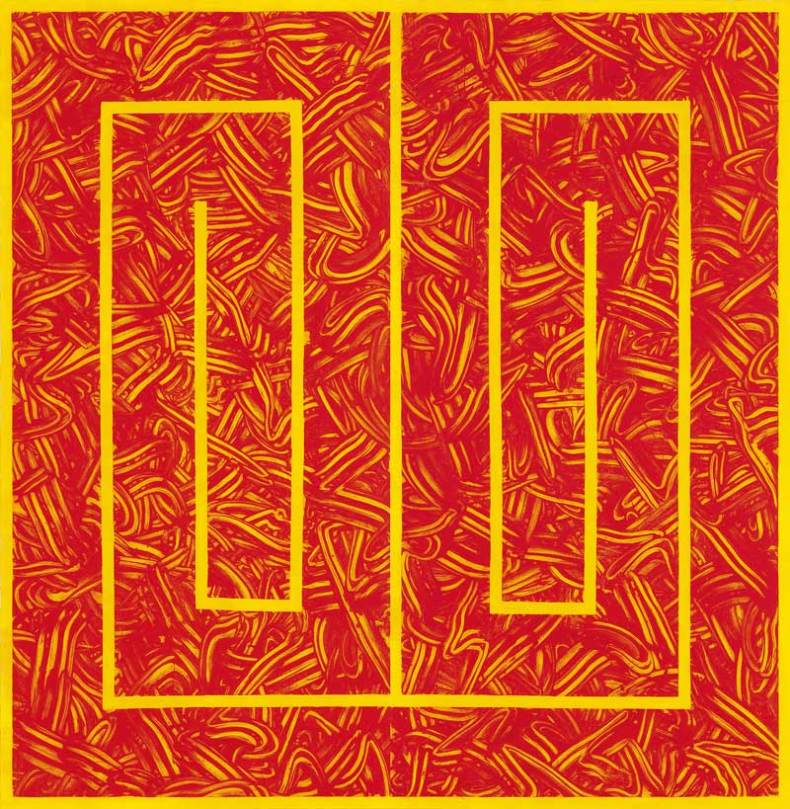
Fingers on Fire (2014), Richard Long. Courtesy Richard Long and Alan Cristea Gallery London © Richard Long
The Cristea prints form a collection Long has called The Spike Island Tapes, and they’re bigger in scale and more colourful than much of his previous work. Was the colour a way of drawing attention to the fact that these are prints rather than mud works? ‘Exactly, yes,’ he says. ‘Making these has given me the opportunity to use colour which I wouldn’t find in natural materials.’ The names of the pieces too are significant. They’re titled – somewhat whimsically, he suggests – after some of his favourite pieces of music: blues melodies, country and western songs, folk tunes. Music has always played a part in his work (Johnny Cash, Bob Dylan and John Cage have been presiding influences), but for these works, produced at Spike Island, a studio and exhibition space in Bristol, he thought of himself as working like a session musician, in one short, inspired burst. ‘It did feel a bit like when musicians hire a studio and lay down some tracks in a few days’ he says, ‘and the whole album gets recorded in one intense period of time. I think I made them all in two days – but I have to work fast anyway, especially where the splashes are formed by the speed of my hand, the fast gestures.’
The Spike Island prints are different from the subtler interventions of his walking works, for which he might arrange stones by the side of the road, or carry water from the end of a river to its source, or walk from one rainstorm to the next and record the journey on a map. ‘Leaving a mark. That’s central to my work’, he says. ‘It’s just a human mark. With my body, or with my gestures.’
As well as getting him out of the gallery, one of the attractions of the walking sculptures was that they liberated him from the need to produce objects, leading to a minimalist simplicity that he sees as a product of his time. ‘I think that was a characteristic of that generation,’ he says. ‘Conceptual art did come about, partly, through asking: why fill the world with more junk?’
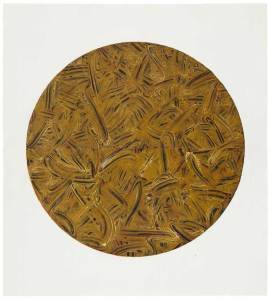
Guitars, Cadillacs (2014), Richard Long. Courtesy Richard Long and Alan Cristea Gallery London © Richard Long
Much of his work has occupied that fertile territory between an idea and its actualisation, between the act and its record. Often he documents his walking sculptures as maps, prints and photographs, narrating the story of them rather than reproducing the journeys themselves. Many of his walks are recorded only as text works, haiku-like prose poems, and talking to Long is a bit like encountering one of these enigmatic pieces. He doesn’t think of the text works as literature but as works of art. ‘I always like to steer clear of the word poetry,’ he says, ‘I just think they’re works of art made of words, like a sculpture is an object made of stone. But obviously they are words and sometimes they do tell a story.’
Stories do seem central to his practice – the story of his own body moving through space and time, the story of the marks he makes as he goes – but he resists over-investing in the idea of art as a form of narrative. ‘Well you can read that into it. It’s not for me to say,’ he smiles. ‘I don’t have any great grand theories of walking, or of making art into a journey, they just seemed like good ideas at the time.’ Nevertheless it is tempting to see all his work as part of a single journey, a continuation of that first line made in the Wiltshire countryside. Was A Line Made by Walking the originator of everything that’s come since? ‘Yes, but it’s easy to say that in hindsight,’ he says. ‘The metaphor is like the stone in the pond: it ripples out. The first sculpture I made was Turf Circle [1966], in my neighbour’s garden, so it literally did start on my doorstep and then spread out. One thing leads to another. That’s the way it goes, right up until now really.’
Long was born in 1945 in Bristol. His parents met at a rambling club, and at school he was captain of the cross-country running team. He studied for a time at the West of England College of Art before being thrown out (‘too precocious’, he says). One thing he did enjoy during this period was the day a week he spent learning etching. At Saint Martin’s, where he was a contemporary of Gilbert and George, he was given free reign to do what he liked, as long as he accounted for his time, signing in and out in a ledger by the door. And so he organised walks out of London, went on bicycle rides and made sculptures on the roof of Saint Martin’s.
For years he didn’t offer interpretations of his work (‘until people started misinterpreting it’). Because of its subtlety, his work acts to re-enchant the world, making you read it in a new way. After encountering a work by Long you never quite know if that stone by the side of the road has been left deliberately or is there only by chance. In a sense it doesn’t really matter. ‘I love that,’ he says. ‘I love the idea that people might see a work of mine in the landscape, and that they might recognise it as a human mark, but not necessarily as a work of art, let alone a work made by me. So often people find a circle of stones and think it might be a Richard Long. Other people can make my work for me.’
This conceptual purity was born in the 1960s and manifested itself in a rejection of the grandstanding interventions of the American land artists and the overblown fussiness of the postmodernists. ‘I suppose I’m drawn to simple, classical, modernist work,’ Long says, ‘as opposed to wacky, comic, figurative, messy stuff. I am a product of that ’60s aesthetic – simple ideas. It was so easy to be original for my generation. It was like
a blank canvas we had to work on for a time.’ For Long, an idea can be just as beautiful as its realisation, but he doesn’t consider himself to be a conceptual artist. ‘I love to make my work, whether it’s walking 1,000 miles or walking in the Cairngorms, or whether it’s making these prints. It’s all me, all made by my energy. I love making all the big sculptures, I like hefting all the great lumps of slate around. It’s the doing.’
Long was overlooked at home for years. No one quite understood the subtlety of his early work. Back then ‘the London art scene was dominated by Anthony Caro, welded metal, new generation sculpture’, he says,‘and they didn’t really have eyes to see it.’ It was in Europe that he first found recognition, with early shows in Düsseldorf and Turin, and support from artists such as Carl Andre and Lawrence Weiner. Though he still sees himself as an English artist, he’s now firmly ensconced as one of our most important and internationally appreciated sculptors. His work has been nominated four times for the Turner Prize, which he won in 1989, for a body of work including White Water Line. In 2009 the Tate staged a a survey exhibition of his work, and this year Bristol’s Arnolfini Gallery is putting on a big show containing recreations of seminal early work as well as several large new sculptures. In March he’ll be anointed as the inaugural ‘Whitechapel Gallery Icon’ at the gallery in which he had his first major UK show. Does he feel like a national treasure? He laughs. ‘I’ve been called that’, he says. ‘It’s not for me to say.’ He’s not particularly interested in the past. ‘I’m not at all interested in doing a big retrospective. It would be impossible anyway, because many of the big sculptures are out there in the world. So it’s not appropriate. People get on to me to do a catalogue raisonné, which fills me with dread. Everything I’ve ever done collected into one great dictionary. An encyclopaedia of my life.’ He shudders.
Long is always moving forward, always seeking out the next idea or the next walk to be made. He talks excitedly about a walk he’s just completed, from the Mosque of Córdoba in Andalusia to the Cathedral of Santiago de Compostela in Galicia, a distance of some 500 miles (‘not a pilgrimage’, he says, ‘a Richard Long walk’). He’s called it From Crescent to Cross. But the Arnolfini show in particular is a homecoming of sorts. Much of his early work began in Bristol, a place that is the source both of the raw materials of many of his mud works and the starting point for many of his walks.
Other things haven’t changed. He still works alone. ‘I’m the last of the amateurs. I don’t have a secretary, I don’t have a PA, I do everything myself. But that’s also because that’s my choice. I’d have no interest in other people making my work. It wouldn’t be my work.’ Despite this, he was invited to a symposium on mountaineering recently and was surprised to discover ‘much to my astonishment, that there’s a whole generation of artists who call themselves walking artists. I’ve got a lot to answer for.’
Long’s work has certainly contributed to a new perception of walking, not as Romantic reverie or politicised tramp, but as artistic act. In the work of authors like Iain Sinclair and Robert Macfarlane, walking has continued to shake off its associations with anorak-bedecked ramblers. Another context is that of mountaineering, now often infused with a whiff of machismo and increasingly undertaken not by the working-class climbers of the 1950s who Long admires – people like Don Whillans and Chris Bonington – but by wealthy hedge-fund managers looking to scale the peaks as a way of asserting their own self-worth. What does Long make of these Rambo-like ramblers? ‘Well, obviously you still have to admire people who have done it because it’s a stupendous thing,’ he says, reflecting on those who climb Everest, ‘but now people are going up in crocodiles. It’s a way of conquering nature. There’s a Carl Andre quote: “A man climbs a mountain because it is there, a man makes a work of art because it is not there.” I think some of the mystery of art is to do something in the world that hasn’t been done before, that wasn’t there before. To walk in a new way, or to make an object that has never been made before.
‘Richard Long: The Spike Island Tapes’ is at the Alan Cristea Gallery, London until 2 April.
Click here to buy the latest issue of Apollo.
Related Articles
Review: Richard Long at Lisson Gallery (Scott Morris)
Unlimited access from just $16 every 3 months
Subscribe to get unlimited and exclusive access to the top art stories, interviews and exhibition reviews.

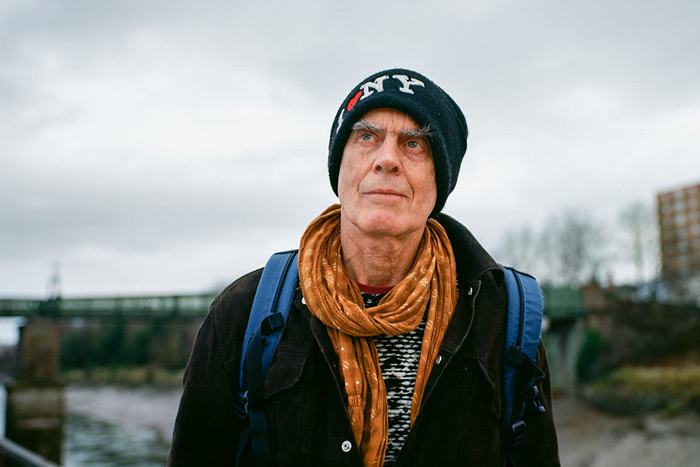
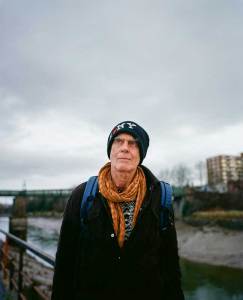
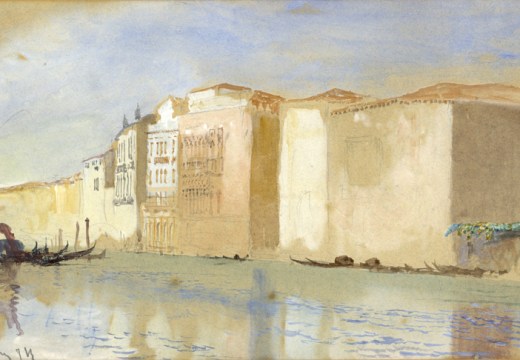
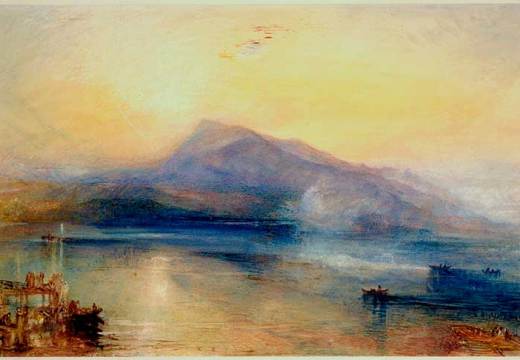
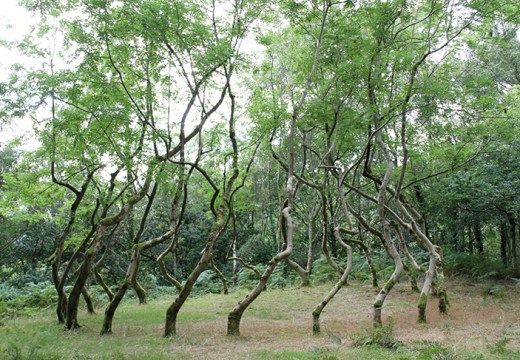









![Masterpiece [Re]discovery 2022. Photo: Ben Fisher Photography, courtesy of Masterpiece London](http://www.apollo-magazine.com/wp-content/uploads/2022/07/MPL2022_4263.jpg)
Has the Fitzwilliam lost the hang of things?